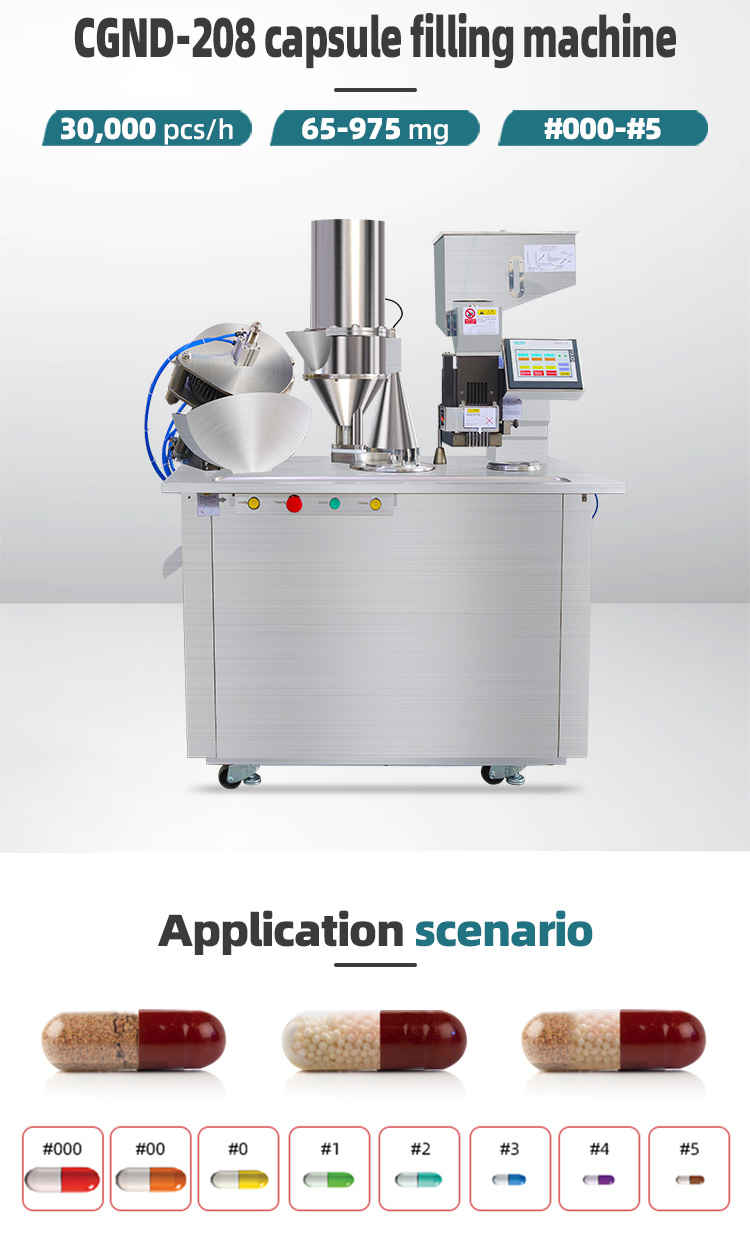Categories
New Blog
Tags
Are you considering investing in a semi-automatic capsule filling machine for your pharmaceutical or supplement business? These versatile machines offer a middle ground between manual filling and fully automated systems. But like any technology, they come with their own set of advantages and disadvantages. Let's explore what you need to know before making your decision.

One of the most significant benefits you'll experience with a semi-automatic capsule filling machine is the substantial increase in production capacity. Using a semi-automatic capsule filling device can significantly increase your yield compared to manual filling methods. Manual production can only upload 10-300 capsules per hour, while with a semi-automatic capsule filling machine, you can fill 40,000 capsules per hour depending on the model. The improvement of production efficiency relative to manual can save a lot of labor and time costs for enterprises and meet the development of enterprises.
Semi-automatic capsule filling machines offer superior consistency and accuracy compared to manual filling methods. The machines use precise mechanisms to measure and dispense the powder or liquid into each capsule, ensuring that every dose is uniform. This level of consistency is crucial for maintaining product quality and meeting regulatory standards. You'll likely see a reduction in weight variations and a more consistent fill from capsule to capsule.
While semi-automatic machines still require some operator involvement, they significantly reduce the labor required compared to manual filling processes. This can lead to substantial cost savings over time, especially for businesses with moderate to high production volumes. You'll be able to reallocate your workforce to other critical tasks, improving overall efficiency in your production line.
Most semi-automatic capsule filling machines are designed to handle a range of capsule sizes, typically from size 00 to size 5. This versatility allows you to produce different products or dosages without investing in multiple machines. Additionally, these machines can usually handle various fill materials, including powders, pellets, and in some cases, liquids. This flexibility can be a significant advantage as you expand your product line or adjust to changing market demands.
Compared to fully automatic systems, semi-automatic capsule filling machines are generally easier to clean and maintain. Many models feature easily disassembled parts that can be quickly cleaned and sanitized between production runs. This can help you maintain a hygienic production environment and reduce downtime associated with lengthy cleaning processes.
Semi-automatic machines typically have a lower initial cost compared to fully automatic systems. This makes them an attractive option for small to medium-sized businesses or those just starting to scale up their production. The lower investment can help you manage your cash flow more effectively while still significantly improving your production capabilities.
With semi-automatic machines, you maintain a level of operator control and oversight that can be beneficial in certain production scenarios. Operators can monitor the filling process in real-time, making adjustments as needed to ensure optimal performance. This hands-on approach can be particularly useful when working with challenging fill materials or when producing small batches of specialty products.
While semi-automatic machines offer a significant speed increase over manual methods, they can't match the production rates of fully automatic systems. If you're looking to produce very large volumes of capsules, you may find that semi-automatic machines become a bottleneck in your production line.
Although labor needs are reduced compared to manual filling, semi-automatic machines still require operator involvement. This ongoing labor requirement can impact your long-term production costs, especially if you're running multiple shifts or have high labor costs in your area.
The human element involved in operating semi-automatic machines introduces the potential for errors. Operators may make mistakes in loading capsules, refilling powder hoppers, or adjusting machine settings. While these errors are typically less frequent than in manual filling processes, they can still occur and potentially impact product quality.
As your business grows, you may find that semi-automatic machines no longer meet your production needs. Scaling up production with semi-automatic machines often means adding more machines and operators, which can be less efficient than transitioning to a fully automatic system.
Different operators may achieve slightly different production rates or levels of consistency when using semi-automatic machines. This variability can make it challenging to predict exact production outputs or maintain perfectly consistent quality across shifts or production runs.
While easier to maintain than fully automatic systems, semi-automatic machines still require regular maintenance and calibration to ensure optimal performance. This ongoing maintenance can result in some downtime and additional costs that you'll need to factor into your production planning.
Semi-automatic capsule filling machines, while smaller than fully automatic systems, still require dedicated floor space in your production facility. If you're working with limited space, you'll need to carefully consider how to integrate these machines into your existing layout.
Your staff will need proper training to operate semi-automatic capsule filling machines effectively. This training takes time and may require ongoing refresher courses, especially if you experience staff turnover. The learning curve associated with these machines can temporarily impact production efficiency as new operators get up to speed.
Semi-automatic capsule filling machines offer a balance of increased production capacity, improved consistency, and manageable investment costs. However, they come with limitations in scalability and ongoing labor requirements. Carefully consider your production needs, growth projections, and resources to determine if a semi-automatic system is the right choice for your business.